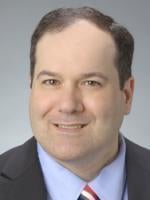On May 15, 2020, the SBA issued its Paycheck Protection Program (PPP) Loan Forgiveness Application (available here).
1. Permits Use of Alternative Payroll Covered Period
While the term of the “Covered Period” for loan forgiveness has not changed – this is still the eight-week period that starts on the first date of disbursement of the PPP loan – the SBA is permitting employers to use an Alternative Payroll Covered Period (“APCP”) for purposes of calculating and submitting “Payroll Costs.” The APCP starts on the first day of the first pay period following loan disbursement and continues for eight weeks. This alternative will help employers track Payroll Costs more efficiently and without as much business disruption.
Note:
-
The use of the APCP is completely optional; however, employers who elect to calculate costs based on the APCP must use that period consistently throughout the loan forgiveness application.
-
The standard Covered Period (“CP”) is still used for purposes of calculating covered mortgage costs, covered lease/rent costs, and covered utility payments.
2. Limited Clarifications on the Definition of Payroll Costs
While the SBA did not address all of the open questions on the definition of “Payroll Costs,” the SBA did provide the following clarifications and insights:
-
Data: Employers must provide the name, last four digits of the SSN, and Cash Compensation for each employee. Data will be listed separately for employees who had an annualized rate of pay of more than $100,000 for any pay period in 2019 and those who did not.
-
Cash Compensation: Cash Compensation is the sum of gross salary, gross wages, gross tips, gross commissions, paid leave (not including leave covered by the Families First Coronavirus Response Act (FFCRA)), and allowed for dismissal or separation paid or incurred during the CP/APCP.
-
Health Insurance: Employers must provide the aggregate amount paid for employer contributions for employee health insurance, excluding employee contributions (because this will be included in the “gross” salary/wages listed under the Cash Compensation component) during the CP/APCP. There is still not clear guidance on how to calculate the employer portion of health insurance for self-insured plans.
-
Retirement Plans: Employers must enter the aggregate amount paid for employer contributions to employee retirement plans, excluding contributions by employees, during the CP/APCP (again, to avoid double-counting because this is included in “gross” Cash Compensation).
-
State and Local Taxes: The SBA reiterates that this line should only include the amount paid by the borrower/employer. The SBA specifically clarified that unemployment insurance payments made to the state may be included.
3. Eligible Payroll Costs Include Payroll Costs Paid AND Payroll Costs Incurred During the CP/APCP
This is a significant clarification, as it allows employers to count amounts that are earned and/or paid during the CP/APCP as eligible Payroll Costs; provided that they only count costs that are paid and incurred during the CP/APCP once (i.e., no “double counting”), and so long as the Payroll Costs incurred but not paid during the CP/APCP are paid on or before the next regular payroll date (even if outside the CP/APCP).
For this purpose:
-
Payroll Costs are “paid” as of the day that paychecks are distributed or the employer originates an ACH credit transaction.
-
Payroll Costs are “incurred” as of the date that the employee’s pay is earned.
4. Eligible Nonpayroll Costs Include Nonpayroll Costs that are Paid AND Nonpayroll Costs Incurred during the CP
As with Payroll Costs, borrowers may request forgiveness with respect to (i) eligible nonpayroll costs paid during the CP and/or (ii) eligible payroll costs incurred during the CP and paid on or before the next regular billing date, even if the next billing date is after the end of the CP. As with Payroll Costs, costs that are incurred and paid during the CP should only be counted once.
5. Covered Mortgage Obligations Cannot Include Prepayments
Borrowers may not count prepayments toward their eligible covered mortgage interest obligations on real or personal property, even if permitted by the terms of the mortgage as in effect prior to February 15, 2020.
6. Covered Mortgage Obligations and Covered Rent Obligations Relate to BOTH Real and Personal Property
The CARES Act only specifically references real and personal property in the definition of “Covered Mortgage Obligation.” The application clarifies that the Covered Rent Obligations may also include obligations related to real or personal property.
7. Guidance on Salary/Wage Reduction Calculations
The SBA provided significant, long-awaited guidance to employers in calculating any reductions to the amount that is potentially eligible for forgiveness as a result of a reduction to salaries or wages.
Specifically:
-
Employers must compare the average annual salary or hourly wage during the CP/APCP to the average annual salary or hourly wage between January 1, 2020 and March 31, 2020. This is significant for two reasons: (i) it specifically allows employers to use an average/annualized rate calculation, which was not contemplated in the CARES Act, and (ii) it permits employers to use a consistent comparison period – Q1 2020 – as opposed to a variable period – the last calendar quarter of employment prior to disbursement. Consistent with the CARES Act, if the average annual salary/wage rate during the CP/APCP is less than 75% of the average annual salary wage rate during Q1 2020, then there will be a reduction to the amount of forgiveness.
-
Notwithstanding the foregoing, if the average annual salary or hourly wage was reduced from February 15 through April 26, but by June 30, 2020, the average annual salary or hourly wage equals or exceeds the average annual salary or hourly wage in effect during the pay period that includes February 15, 2020, then any reduction during the CP/APCP will be disregarded (i.e., it will not count toward any reduction to the amount eligible for forgiveness).
8. Calculation of Average Full-Time Employee Equivalents
The SBA also provided some additional guidance regarding how to calculate full-time employee equivalents for purposes of the reduction to headcount calculation. Specifically, employers may either:
-
Option 1: For each employee, calculate the average number of hours paid per week during the relevant period, divide by 40, and round to the nearest tenth, with a maximum of 1.0; or
-
Option 2: Assign 1.0 for each employee who works 40 or more hours per week and 0.5 for each employee who works fewer than 40 hours per week.
When conducting this analysis, note:
-
Reductions in the following situations will not reduce a Borrower’s loan forgiveness: (i) any position for which the Borrower made a good-faith, written offer to rehire the employee during the CP or APCP which was rejected by the employee (consistent with FAQ 40) and (ii) any employee who, during the CP or APCP (a) was fired for cause, (b) voluntarily resigned, or (c) voluntarily requested and received a reduction in his or her hours. The exceptions under category (ii) above are a welcome relief for employers.
-
As with the Salary/Wage Reduction calculation, a Borrower will be exempt from the reduction in loan forgiveness based on a reduction to full-time equivalent employees if (i) the Borrower reduced its full-time equivalent employee levels from February 15, 2020 through April 26, 2020, and (ii) by June 30, 2020, the Borrower restored the full-time equivalent employee reductions to the level in the Borrower’s pay period that included February 15, 2020.
9. Document Retention Requirements and Government Audit Rights
The SBA requires the submission of specified documents for the loan forgiveness application, but the SBA also is requiring borrowers to retain additional records, including those that support the borrower’s necessity and eligibility certifications, for six years after the date the loan is forgiven or repaid in full. (Note six years is the statute of limitations for False Claims Act cases.) Borrowers must permit authorized representatives of the SBA, including the SBA Office of Inspector General (OIG) to access such files upon request. Further, the SBA clarified that if a borrower is subject to a waiver of the affiliation rules under the CARES Act, then that same waiver will apply for purposes of determining whether the borrower, combined with its affiliates, had PPP loan(s) over $2M, which will be subject to audit prior to loan forgiveness (FAQ 46).
10. Additional Enforcement Risks
The loan forgiveness application contains several additional certifications that provide the SBA, DOJ, or SEC with a second opportunity to challenge allegedly false submissions and certifications. These include certifications regarding the number of employees of the borrower at the time the PPP application was submitted and the number of employees of the borrower at the time the loan forgiveness application is submitted, as well as the borrower’s representations regarding its use of the loan proceeds. Like all other facts in a certified request for government funds, these, too, must be true. Since this is the document through which the borrower is seeking to extinguish, or at least reduce, its obligation to repay borrowed federal funds, it is critical that borrowers double check the accuracy of its certifications, clarify any “grey” areas, and build a well-supported, accurate reliance file.
The loan forgiveness application also states, “The Borrower’s eligibility for loan forgiveness will be evaluated in accordance with the PPP regulations and guidance issued by SBA through the date of this application. SBA may direct a lender to disapprove the Borrower’s loan forgiveness application if SBA determines that the Borrower was ineligible for the PPP loan.” As a result, at the time a borrower seeks loan forgiveness, the SBA will also be assessing the borrower’s eligibility for the PPP loan and if the SBA determines the borrower was not eligible for the PPP loan, the SBA may deny loan forgiveness and require the borrower to repay the loan. In such a case, the borrower may also be subject to other civil and criminal penalties as well. Borrowers should take this into account when assessing how to proceed in light of the May 18, 2020 limited safe harbor deadline.








 />i
/>i

